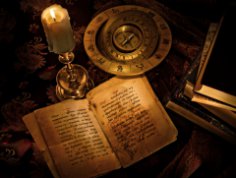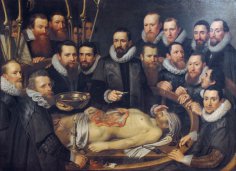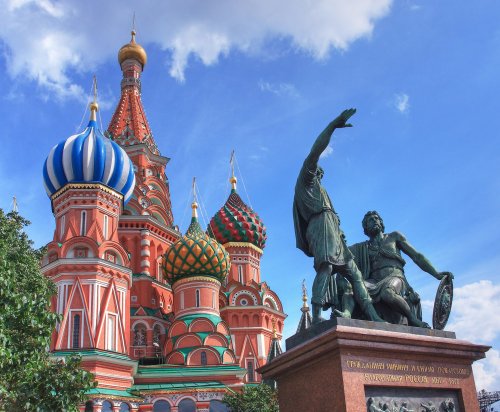
In 1600, Giordano Bruno was burned at the stake in Rome.
The renowned scholar, philosopher, and freethinker aroused the indignation of all church authorities—both Catholic and Protestant. He was no more welcome in Elizabethan England than in papal Italy. The only exception was a group of thinkers calling themselves the “School of Night.”
The renowned poet, warrior, and diplomat Philip Sidney personally invited him to England and received him as a distinguished guest, securing permission for him to deliver a series of lectures at Oxford. Bruno spent several months in England. The members of the “School of Night” actively attended his lectures. They later discussed Bruno's ideas at their meetings.
Not long before, Copernicus had overturned Ptolemy's geocentric system, placing the Sun instead of the Earth at the center of the universe. Bruno went further than Copernicus, creating a theory of multiple worlds scattered throughout an infinite universe. However, he was not the only, or even the first, scientist to propose this hypothesis, incredibly daring for its time.
One of the participants in the “School of Night” was the scientist Thomas Digges , born in Canterbury, like Marlowe. His father, Leonard Digges, invented the “optical glass,” now known as the telescope, and even in his youth, Thomas was able to see the starry sky in a way no one had ever seen before. The sight so captivated him that he devoted his life to the study of astronomy and proposed the hypothesis of multiple worlds several years before Bruno.
Among Diggs's papers was a portrait of the Danish astronomer Tycho Brahe. This portrait depicts Brahe's heraldic shield with the names Sophie Guildenstern and Erik Rosencrantz inscribed on it. The scientist's laboratory was located near Helsingør Castle, the prototype for Elsinore.
Shakespeare scholar Peter Asher discovered in Hamlet's speeches many terms used by Diggs in his writings: “opposition,” “retrograde,” “conjunction,” “climax,” “transformation.” Hamlet, a student at the University of Wittenberg, was well versed in revolutionary scientific theories. No wonder Claudius so opposed his return to the university. Incidentally, the name “Claudius” appeared only in the second edition of Hamlet—no other source of the play contains this name (which is certainly not Danish). Some scholars have seen it as an allusion to the Roman emperor Claudius. Asher, however, noticed a connection with another character from the classical world, Claudius Ptolemy.
Hamlet's sarcasm about his prolonged exposure to the sun may allude to Copernicus's heliocentric system. Copernicus was buried in Poland—perhaps on that very tiny patch of land that Fortinbras launched his military campaign against Poland to conquer.
Russian-speaking readers are accustomed to reading, “There are more things in this world, friend Horatio, than our philosophy has dreamed of.” However, in the original, Hamlet says, “There are more things in heaven and earth.”
Four times, in describing man, the prince uses the word “infinity.” Man-microcosm is as infinite and mysterious as the Universe, whose glass spheres have collapsed, revealing a boundless and incomprehensible Cosmos beyond their veil.
Ten years before Hamlet, London audiences witnessed another explorer on stage, eager to unravel the mysteries of the universe. He was the hero of Marlowe's play, and his name was Faustus.
Faust's character is largely autobiographical. Like the participants of the “School of Night,” he thirsts for knowledge and demands from Mephistopheles “a book in which the luminaries and planets are described, as well as their paths and positions.” The demon immediately hands him the text. Faust glances at it and tosses it aside, saying, “You lie.” This dialogue alludes to a discussion that took place at Oxford between Bruno and the university's luminaries.
In 1616, a second edition of Faust was published. It added several new scenes. Officially, the changes were made by two little-known playwrights, hired specifically for this purpose by Philip Henslow, owner of the Rose Theatre. However, it's completely unclear why they introduced a new, rather extensive and risky plotline. In the new version, Bruno appears at the papal court—or rather, he is brought in chains. After interrogation, he is sentenced to death. But Faust and Mephistopheles free Bruno and carry him away from Italy.
The new character is called Bruno the Saxon – a significant name considering that the early story of Hamlet was written by Saxo Grammaticus, and Wittenberg – the freest university in Europe, where the Copernican system was studied – was located in Saxony.
Hamlet knows not only astronomy but also anatomy. He expertly describes the circulation of blood in the human body. The author may have drawn his information from the works of Michael Servetus, a medical scholar who, like Bruno, was burned at the stake in Geneva. His executioner was the fanatical Protestant John Calvin, who hated both carnal and spiritual pleasures and forbade not only inappropriate thoughts but also balls, theaters, and elegant clothing.
Mortal and implacable enemies—Catholics and Protestants—defended with equal fervor the medieval model of the universe, resting on three pillars: the dogmas of the Bible, the logic of Aristotle, and the cosmogony of Ptolemy, attempting to force into their Procrustean bed the boundless depths of the cosmos and the individuality revealed to the minds of the thinkers, creators, and visionaries of the Renaissance. The battle for free thought and creativity, based on reason and intuition instead of prescriptions and dogmas, was truly heroic and often led to tragic ends.
And the prince in the night-colored cloak, wandering the corridors of Elsinore with his ever-present book in his hands, was one of the heroes and martyrs of this battle, like his creator, who hid under the cloak of Hecate – the goddess of the night and patroness of secret and forbidden knowledge – on the very day when on earth the English celebrated her annual festival, and in the sky the place of the Sun was briefly taken by seven stars.





